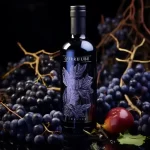Are you a wine lover with a sweet tooth? If so, you’ve landed on the right page. We’re going to dive deep into the wonderful world of sweet wines, exploring how to identify them, their unique characteristics, and much more. So, sit back, uncork your curiosity, and let’s embark on this vinous journey together!
1. Understanding Sweetness in Wine
Sweetness in wine is primarily derived from residual sugar, left over after the fermentation process. But what exactly does that mean for your palate? Let’s break it down.
A. The Science Behind Sweetness
Wine’s sweetness is determined by the balance between sugar and acidity. The higher the sugar content, the sweeter the wine. But remember, the acid level can mask some of that sweetness. It’s a delicate dance between these elements that creates the magic in your glass!
B. The Sweetness Scale
Wines are often classified on a scale from dry to sweet. This scale includes dry, off-dry, medium-dry, medium, medium-sweet, sweet, and very sweet. Understanding this scale can help you navigate the wine aisle with confidence.
2. Types of Sweet Wines
There’s a wide array of sweet wines, each with their distinct taste profiles. Here are a few types you should know about.
A. Dessert Wines
These are often served with or as dessert. Examples include Port, Sherry, and Sauternes.
B. Late Harvest Wines
Grapes for these wines are left on the vine longer, increasing their sugar content. A popular example is late-harvest Riesling.
C. Ice Wines
These are made from grapes frozen while still on the vine. Ice wines are incredibly sweet and concentrated.
3. Identifying Sweet Wines
Now, let’s look at some ways to identify sweet wines.
A. Read the Label
Labels are a treasure trove of information. Look for terms like late harvest, ice wine, or specific grape varieties known for sweetness.
B. Know the Grape Varieties
Some grape varieties are inherently sweeter. These include Muscat, Riesling, and Gewürztraminer.
C. Alcohol Content
Lower alcohol content can indicate a sweeter wine. Why? Because during fermentation, yeast consumes sugar and produces alcohol. If there’s residual sugar, it means not all sugar has been converted, resulting in a lower alcohol and sweeter wine.
4. Tasting Sweet Wines
The ultimate test of a wine’s sweetness is tasting. When you sip, think about the balance of sweetness, acidity, and other flavors. Do you feel a residual sugar coating your tongue after swallowing? That’s a good indication of a sweet wine.
5. Pairing Sweet Wines
Sweet wines pair excellently with spicy food, certain cheeses, and of course, desserts. The key to a great pairing is balance. You don’t want the wine to overshadow the food, or vice versa.
Conclusion
Identifying sweet wines is both an art and a science. It involves understanding the wine-making process, recognizing certain characteristics on the label, and ultimately, trusting your palate. With this guide, we hope you feel more confident navigating the world of sweet wines. Happy tasting!
Frequently Asked Questions
- Is all Riesling wine sweet?
Not all Riesling is sweet. It can range from dry to very sweet. Always check the label for clues.
- Is Moscato sweeter than Riesling?
Typically, Moscato is sweeter than Riesling, but it can depend on the specific bottle and the winemaker’s style.
- Are sweet wines less alcoholic?
Generally, yes. Sweet wines tend to have lower alcohol content as the fermentation process is stopped before all the sugar is converted to alcohol.
- Can I use sweet wine for cooking?
Absolutely! Sweet wines can add depth and flavor to a variety of dishes, particularly desserts and sauces.
- What are some popular sweet red wines?
Some popular sweet red wines include Lambrusco, Brachetto d’Acqui, and Ruby Port.









